There’s a lot to love in Street Fighter 6, one of the best games I’ve played in the last couple of years. I love the new characters. (Marisa, the jacked up pankratiast, is my main, and Manon, the supermodel ballerina, is my secondary.) I love the new Drive Impact attack, which lets you reverse the momentum of the fight with a brilliant splash of paint. I love the Modern control scheme—a simplified mapping of the Classic control scheme—which allows my eight-year-old son to throw hands alongside his father. And I especially love the game’s updated depiction of Chun-Li.
In past games, Chun-Li, the original female world warrior, has been largely driven by revenge and duty. But in Street Fighter 6 she’s finally attained a measure of peace, and she’s trying to pass on the life lessons she’s learned to both her students and her opponents.
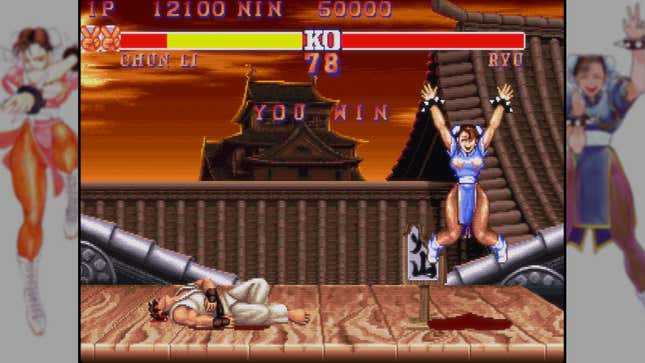
The first time I played Street Fighter II was at another eight-year-old’s birthday party, held at a local arcade where everyone got an infinite number of credits for a two-hour block. Then my parents bought me the Super Nintendo port of Street Fighter II: The World Warrior for my birthday in 1992. That’s when I finally learned the backstory of the Strongest Woman in the World, thanks to her bio in the instruction booklet:
Unlike many of the other contestants, Chun-Li has not entered the tournament for personal glory. Instead, she has been secretly tracking the movements of an international smuggling operation known as Shadaloo. The trail has led her to the tournament and she now believes that one of the Grand Masters may have been responsible for the disappearance of her father.
E. Honda entered the tournament as a matter of personal pride. Dhalsim entered to attain a higher level of consciousness. But Guile and Chun-Li were the only two competitors who had a personal issue with dictator and final boss M. Bison—Guile, because Bison had killed his best friend Charlie, and Chun-Li, because Bison had killed her father.
When you beat the game with her, Chun Li visits her father’s grave and tells him that she avenged his death. She then takes off her fighting outfit, and exclaims, as she unties her ox horns, “I can get back to being a young single girl.”
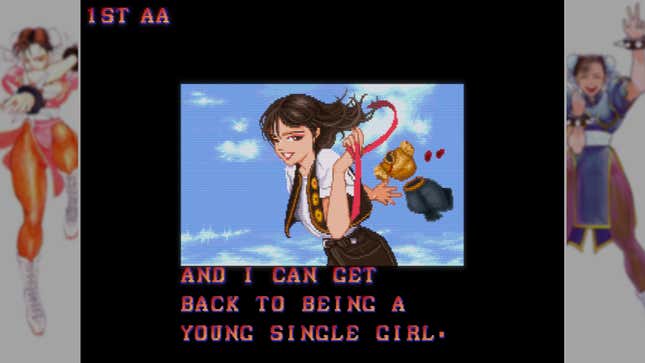
But for almost 30 years, we’ve never gotten to see Chun-Li actually live this happy ending. After Street Fighter II came the Street Fighter Alpha games (1995-1998), narrative prequels that featured Chun-LI as a young Interpol officer, who didn’t yet know the identity of her father’s killer.
Street Fighter III: Third Strike (1999) was our first look at Chun-Li’s life since Bison’s death. New villain Urien kidnapped Li-Fen, a young girl with ties to Shadaloo, which again forced Chun-Li out of retirement. That game ended with Chun-Li rescuing Li-Fen, adopting her, and training her (and other rescued children) in Chinese kenpo.
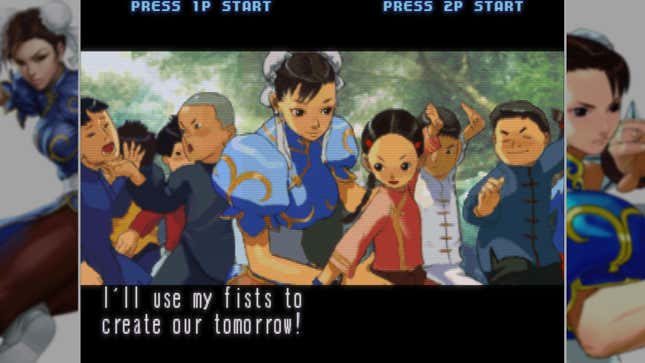
Then came Street Fighter IV (2008) and Street Fighter V (2016), which chronologically took place after Street Fighter II but before Street Fighter III. And again, Chun-Li was duty-bound; M. Bison, once thought dead, was alive and regaining his power. But by the end of the game. Bison was dead (for real this time). Shadaloo was dismantled. And Chun-Li met Li-Fen for the first time and took her under her wing.
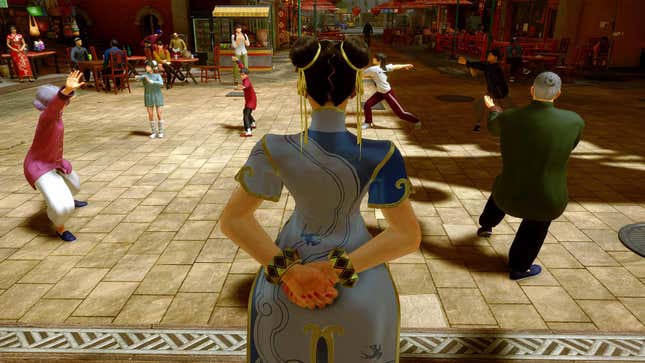
Which brings us, finally, to Street Fighter 6, which takes place after Street Fighter III; making it the first Street Fighter game in 24 years to move the timeline forward. It would have been easy for the developers to concoct a reason for Chun-Li to once again drop everything and march righteously into battle. Li-Fen could get kidnapped, again. A surviving Shadaloo faction could try and consolidate power. But instead, the developers finally gave Chun-Li some time and space to find happiness and fulfillment in her life, insteading of having to put that off once again to go on another ass-kicking adventure.
Here’s her biographical text in the new game:
A former high-kicking ICPO agent, Chun-Li looks after Li-Fen, a victim of the Black Moon Incident. With Shadaloo sundered, she now runs kung fu classes, and has become a well-loved member of the local community.
Chun-Li is not the only OG fighter to shift gears in Street Fighter 6. Blanka is now a tour guide in Brazil and supports his mother. E. Honda is a gourmet chef. Zangief is also a teacher. But Chun-Li is interesting because of who she’s teaching. All of her students are novices, a mixture of young children and senior citizens. She is vastly overqualified for her job; she’s not seeking out the best of the best, or trying to find her successor. She’s teaching in the town square of Chinatown, to whoever lives in that community. And many people, even her own students, find it a bit odd.
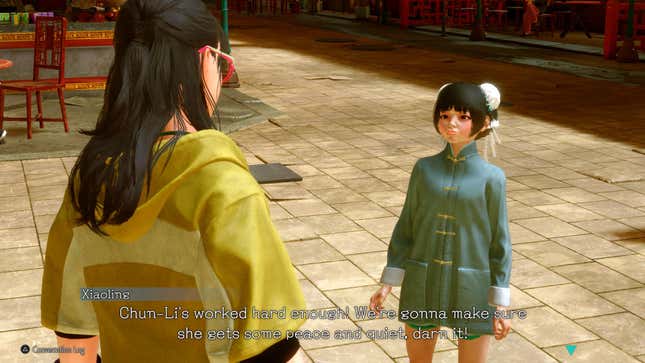
For comparison: my eight-year-old son learns Jeet Kune Do at the New York Martial Arts Academy in Queens, which offers martial arts training to both adults and children; my son just earned his purple belt. The late Bruce Lee founded Jeet Kune Do, and the school highlights its lineage in its promotional materials. Bruce Lee taught Ted Wong. Bruce Lee also taught Dan Inosanto, who taught Chris Kent. Chris Kent and Ted Wong both taught Dino Orfanos, whose instructors teach my son.
The equivalent to what Chun-Li is doing in Street Fighter 6 would be if Bruce Lee himself decided to run my son’s class at the New York Martial Arts Academy.
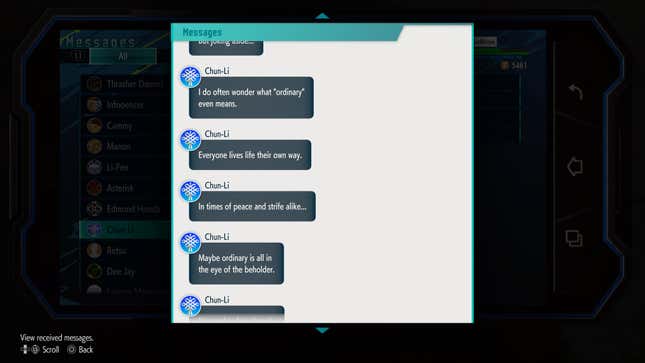
One of Chun-Li’s students—a little boy who tells us he’s a beginner—speculates that Chun-Li does this as a hobby, or because she finds it relaxing. The latter theory holds weight, especially because in the game, Chun-Li repeatedly extols the virtues of living a balanced life.
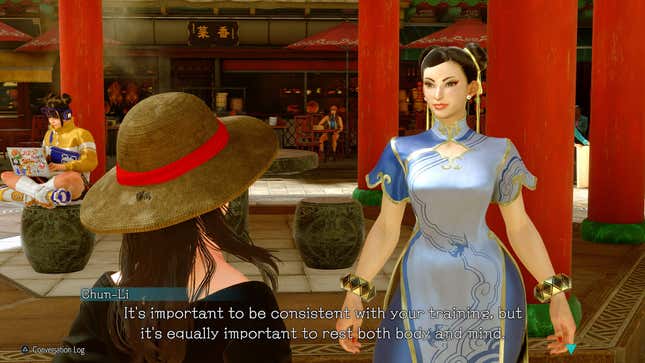
She speaks from experience, because despite her wishes, she never fully experienced that elusive, post-Street Fighter II freedom she aspired to. She reminds me a bit of George Bailey, the hero of director Frank Capra’s 1947 classic It’s a Wonderful Life, who always wanted to go exploring and travel the world, but kept getting held back by obligations to his family and town. His youth and opportunities passed him by, forming the movie’s central conflict.

Chun-Li’s now a grown woman with a grown woman’s concerns. Her girlish days are behind her—even her trademark victory animation, in which she jumps up and down with childish glee, is now an Easter egg of sorts, in that she only does it when she gets a perfect KO. In her World Tour mode text messages, she tells the player she’s worried about her metabolism—a worry I share, as someone who’s moving into middle age—and how she needs to be vigilant with her training as a result.
(As an aside: Can we talk about how awesome it is that Chun-Li sends text messages to you? For this veteran player, those text message notifications were a huge incentive, and running into Chun-Li felt like meeting a celebrity.)
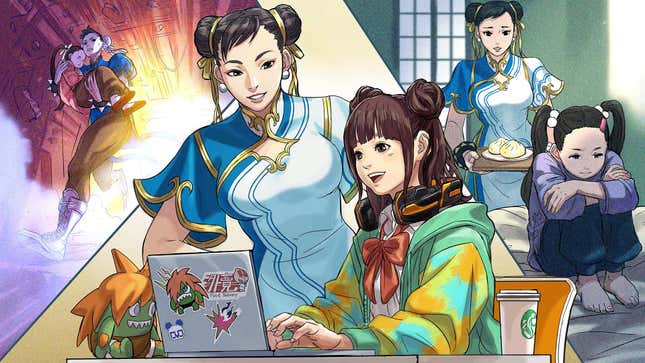
The way Chun-Li experiences girlhood is not through herself, but through the eyes of Li-Fen. We see artwork of Chun-Li caring for her adoptive daughter—by making her steamed bao buns when she’s angry, by shopping with her at the mall, by supporting her interests in computer hacking, by eating ice cream together. These scenes humanize the longtime warrior and give us insight into her life away from fighting. In the artwork below, my favorite image is the one in the right-hand corner. Chun-Li is bargain hunting for Li-Fen’s outfits, and Li-Fen doesn’t look too impressed.
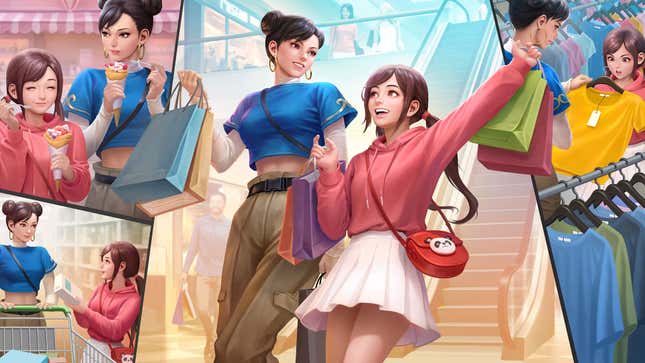
Chun-Li no longer taunts her opponents. In fact, she’s actively trying to help archrivals like Juri. Both characters had their families destroyed by M. Bison. And now that Bison is dead, Chun-Li warns Juri not to let her trauma consume her.
She’s also helping Ryu acclimate into modern society. He’s been a nomad for so long that he doesn’t know how to dress himself, and Chun-Li takes him out shopping for new clothes. This paints a picture of Chun-Li as a generous soul, who’s trying to help others navigate what she likely struggled with. Prior games have told us as much. But Street Fighter 6 goes the extra distance to show us.

No doubt, Chun-Li will have additional challenges and trials to face—either in DLC content for Street Fighter 6 or in another sequel, years from now. But this brief moment of respite, when she can actually enjoy the life that she’s fought for, is refreshing. She’ll never get to be the “young single girl” that she once hoped she would be. But she’s found her purpose and happiness as “jiě jie” (big sister), by giving someone the peaceful life she denied herself.
All of which is to say that Street Fighter 6 does more to personalize and deepen its characters than any single prior entry in the series. It is a phenomenal fighting game whose mechanics manage a precarious balance between deep and accessible. But it also gives shape and definition to what was, for many years, very broad strokes of characterization. Out of the entire cast, Chun-Li best epitomizes that new, thoughtful quality.

